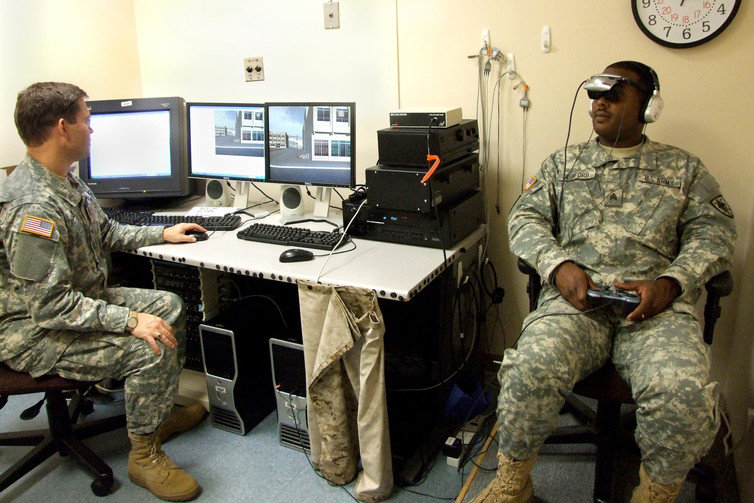Hvad, alle disse teknologier har til fælles, er, at de er nye neurovidenskabelige fremskridt, der er drevet frem af militær forskning inden for en bredere udvikling af neurovidenskab som er blevet massivt støttet af regeringer i både Amerika og den Europæiske Union. Selv om meget om hjernen forbliver mystisk, har denne forskning bidraget til at den hurtige og forbavsende udvikling af neurovidenskabelig teknologi.
Og mens vi kan forbavses over disse udviklinger, er det også ubestrideligt sandt, at denne situation rejser betydningsfulde etiske spørgsmål. Hvad er den rette rolle - hvis nogen - af neurovidenskab i inden for forsvar eller krigsførelse? Min forskning behandlede disse spørgsmål i en større sammenhæng ved at se på, hvordan internationale relationer og mere præcist krigsførelse formes af videnskabelig og medicinsk ekspertise og teknologi.
Weaponization of a peaceable science?
To understand the relationship between science and war, academic bioethicists, journalists and policy advisors alike typically rely on the framework of "dual use." Starting from the assumption that the purpose of science is to improve human life, this perspective nevertheless admits that many technologies used in peacetime or to help enhance human capacities can also be harnessed to a second use: harming and degrading human capacities as part of a military arsenal. This framework calls attention to the potential misappropriation of sciences and technologies. By acknowledging potential misuses, it aims to help guide policy to limit such possibilities through practical tools such as weapons conventions.
Key to this framework is the concept of "weaponization." The dual use idea assumes that we should be concerned with how a once "peaceful" science or technology came to be developed and used in war or national security applications. This process is termed the "weaponization of neuroscience."
The dual use framework and the weaponization concept may offer some immediate potential practical utility. But, as I have written more extensively elsewhere, they're based on a massively misguided notion both of the history of neuroscience and of what is at stake practically and politically.
Neuroscience's roots are both civilian and military
The dual use framework and weaponization concept assume stark war/peace and military/civilian divides. But in fact, the discipline of neuroscience grew equally and simultaneously out of institutions we typically consider civilian and military.

This state of affairs was nothing new: Modern warfare and medical and scientific innovation have long been symbiotic, including the "invention" of American clinical neurology through the American Civil War. It's not possible to say that neuroscience has been "weaponized," because this presumes a naturally peaceful and non-military origin story that is simply historically inaccurate.
Simultaneously used for good and ill
Also, the dual use framework and the concept of weaponization assume a distinct divide between help and harm. People using these concepts are primarily concerned with harmful applications of neuroscience - those that degrade human capacities. Without a doubt, these are of deep concern. Few would deny that we should pay close attention, for instance, to the use of neuropharmaceuticals to degrade the combat capabilities of enemies or produce interrogation susceptibility, or related developments.
But the stark divide between help and harm elides the fact that many technologies can do both simultaneously.
One example is the current DARPA-funded development of brain-machine interfaces. These technologies seek to connect the brain directly to machine technologies in order to control them remotely. Of course this may be a boon for veterans and soldiers in need of better prosthetic devices. But these are the very same technologies (and sometimes the same experimental subjects) that are being used to pilot drones for potential use in warfare.

For all these reasons, it's not possible to say that neuroscience has been "militarized" or "weaponized." The dual use framework ignores how embedded neuroscience has always been with war and national defense. In doing so, it leads us to underestimate the political task at hand, both in relation to war and in relation to science. On the side of war, it elides the ethical questions we need to be asking, not only about weaponization, but also about the supposedly benign practices of diagnosis, cure and enhancement. On the side of science, it obscures questions about what research gets funded and praised, and about the opportunity costs of allowing military imperatives to drive scientific inquiry.




Læserkommentarer
dig vores Nyhedsbrev